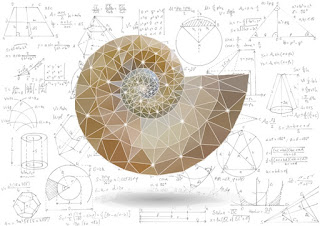DESMA 9 Week 2 Blog
 |
| Making Art From Equations |
This week's lecture is about the convergence of Math and Art. As a significant part, or even "base" of all science, math plays a pivotal role in all aspects of life, even art! In anything from a detailed drawing, to graphic design, to architecture, math is at work in tandem with art. Especially nowadays, art is being taken to whole new lengths beyond just a palette and a canvas. Designers are now able to use computers to develop their own unique styles of art that help bring their craft into the technologically advanced 21st century. This first article i read summed this all up pretty well: "Art is illusion, and transformations are important in creating illusion." These transformations are only made possible by the computers and the mathematics behind the computers that help this art come to life.
I still remember the following TED talk that I came across years ago, which is very relevant to our discussion of Math & Art. It claims that our brains are especially wired to recognize patterns which allows us to depict the way nature works with art. Van Gogh’s Starry Night, in fact, visually describes turbulent flow of fluids via its spiraling depictions of light motion. When measured closely the drawings are remarkably similar to the fluid turbulence equations that were determined by Andrey Kolmogorov. Therefore, while Van Gogh was in a turbulent personal state he was able to visually represent the complex and not even fully understood mathematical mystery of fluid and light.
 |
| The Golden Ratio exhibited by the Parthenon |
References:
Inga Nielsen, Alex Landa, Shutterstock. "Mathematical Masterpieces: Making Art From Equations". N.p., 28 Feb 2014. Web. 16 Apr. 2017 <http://discovermagazine.com/mathart>
"MAM2003 Essay: Mathematics and Art -- So Many Connections." N.p., n.d. Web. 16 Apr. 2017.
St. Clair, Natalya. "The Unexpected Math behind Van Gogh's "Starry Night" - Natalya St. Clair." YouTube. YouTube, 30 Oct. 2014. Web. 16 Apr. 2017.
Gary Meisner. "Golden Ratio in Art Composition and Design." N.p., 4 May 2014. Web. 16 Apr. 2017 <https://www.goldennumber.net/art-composition-design/>
Britton, Jill. Gold 08. Digital image. Jill Britton Homepage. N.p., 6 May 2012. Web. 16 Apr. 2017. <http://britton.disted.camosun.bc.ca/goldslide/gold08.jpg>.



I really liked your post because it emphasizes how art, and therefore math, are innate to human beings. All of these paintings and architectural structures were created so long ago, and now that we have the technology to analyze them, we're seeing these patterns. The Van Gogh fact was really interesting and I had never heard that before!
ReplyDeleteI never knew artists were already using techniques derived from math in their artwork. I really like how you showed how Van Gogh used math in his "The Last Supper" piece. It doesn't look like he used proportions, but he actually did put a lot of thought in perfecting all the ratios.
ReplyDeleteI really like the Ted talk included in your blog, which illustrated how our brains analyze information and how that is related to the relationship between math and arts. The art works you choose in your article is very attractive as well, especially the Van Gogh one.
ReplyDelete